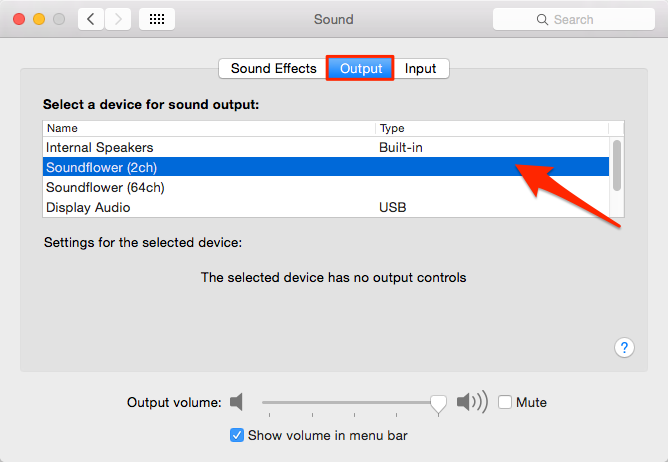If you are not familiar with what SoundFlower does, then you most likely, don't need to install it on your Mac.

Mac OS High Sierra/MojaveにSoundflowerをインストール出来ないときの対処方法. 環境 Mac OS High Sierra ver.10.13.6 ※追記:Mojave 10.14.6でも確認済み。 Soundflower 2.0b2. 前提 soundflowerのインストールを試みたが,「エラーのためインストールできません」と表示されている. Soundflower is an open source kernel extension for MacOS, designed to create a virtual audio output device that can also act as an input. Initial development and maintenance of Soundflower was done by Cycling '74. In 2014, Cycling '74 passed stewardship of Soundflower to Rogue Amoeba, but we ultimately didn't have the time or resources to improve the product.
Basically, SoundFlower provides your Mac with the ability to route audio. Audio routing is the path of your audio in your system. Let's take an example where your Mac has no external audio interfaces. When you play a song in iTunes that audio route will be: iTunes > Audio Interface > Internal Speakers.
Soundflower
With SoundFlower installed, you can now provide additional paths for audio to take. The following article may prove helpful: How to capture audio with SoundFlower - Macworld
May 4, 2019 10:13 AM
Latest Version:
Soundflower 2.0 Beta 2 LATEST
Requirements:
Mac OS X 10.6 or later
Author / Product:
Rogue Amoeba Software, Inc. / Soundflower for Mac
Old Versions:
Filename:
Soundflower-2.0b2.dmg
Details:
Soundflower for Mac 2020 full offline installer setup for Mac
It was designed to be a no-nonsense and straightforward, which makes it usable not only by seasoned audio professionals but also novices who just want to re-route audio signal from one app to another. It comes in the form of the easy-to-use status bar app that you can use to configure audio settings and prepare audio feeds to be sent to specific devices and apps. For example, you can send your music player audio feed to another app that expects to record audio from your microphone input. By default, Soundflower creates a virtual 2-channel and 64-channel devices that can be4 used as default input or output devices in various applications.
The entire process of emulating virtual audio devices can easily run even on older or weaker Mac configurations, ensuring that your other apps will run without any issues.
Installation and Use
While the Soundflower for macOS comes in an extremely small package (smaller than 100kb), its installation requires just a little bit more involvement than with regular Mac apps since the installer is not signed. You are required to hold the control key while installing, and after that, the fully signed app will be activated on your system.
Soundflower Os X Mojave
Soundflower app is accessible directly from your status bar, with a dropdown window that holds numerous configuration settings for the emulated 2ch and 64ch devices. For each device you can set their buffer sizes (64-2048), routing for each channel and set audio cloning properties. At the bottom of the drop-down menu, you can also access Audio Setup window that will showcase a standalone window with configuration tabs for your physical audio components (Built-in Microphone, Built-in-Input, Built-in Output) and Sound flower’s emulated audio devices (2ch and 64ch). Each of the audio channels can have its own volume level, specific dB change, or it can be fully muted. Audio format for each detected device can also be changed with a simple dropdown menu selector.Initial development and maintenance of Soundflower was done by Cycling '74. In 2014, Cycling '74 passed stewardship of Soundflower to Rogue Amoeba.
Soundflower For Mac Os Mojave 10 14 5

Soundflower For Mac 10.5.8
Features and Highlights
Soundflower For Mac Os Mojave
- Create a virtual audio device for re-routing of your audio channels.
- Simply share audio feeds from one app to another.
- Re-route audio from music player to audio editors without the need for external hardware.
- Support for 2ch and 64ch virtual audio devices.
- Lightweight and unobtrusive.
- Fully customizable.
- Created in an open source environment.
- 100% Free!